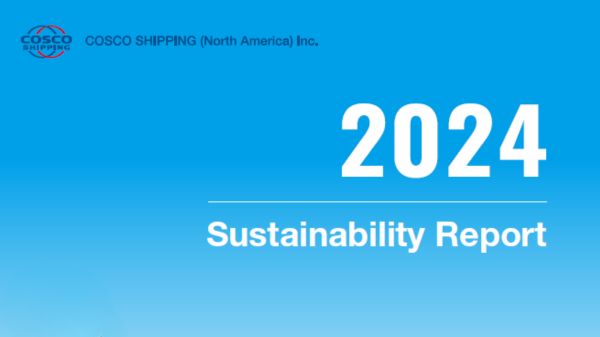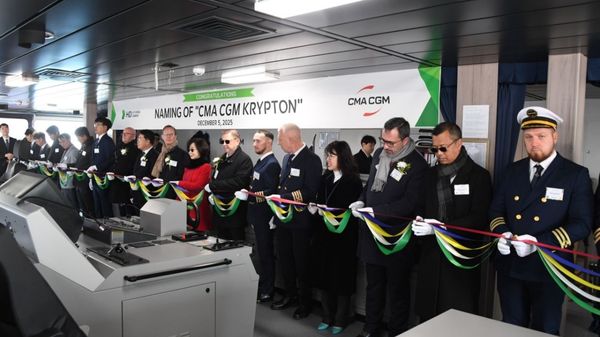

|
Landmark methanol-powered bunkering vessel departs shipyard
World's first methanol-powered IMO II chemical bunker tanker begins operations after completion of construction phase. |
|
|
|
||

|
Monjasa mourns death of senior trader Paul Pappaceno
Marine fuel supplier to hold celebration of life for 39-year industry veteran. |
|
|
|
||

|
Imabari delivers 13,900-teu container ship with future-fuel readiness
Japanese shipbuilder hands over One Synergy with methanol and ammonia conversion designs approved. |
|
|
|
||

|
Cosco Shipping reports ongoing efforts to advance use of low-sulphur fuels
Company achieves near-total compliance with vessel speed reduction programs and 100% shore power use in Oakland. |
|
|
|
||

|
From Regulation to Reality: Fuel Assessment Update of the Mediterranean Emission Control Area | Steve Bee, VPS
|
|
|
|
||

|
CMA CGM names 13,000-teu methanol-fuelled containership in South Korea
Dual-fuel vessel will operate on Asia-Mediterranean-Middle East service connecting three regions. |
|
|
|
||

|
Shipping industry pivots to fuel efficiency amid regulatory uncertainty on decarbonisation
ABB says pragmatism prevails as shipowners focus on adaptable technologies following IMO net-zero framework delay. |
|
|
|
||

|
Maersk to trial 50% ethanol blend on dual-fuel methanol vessel
Shipping line plans higher-ethanol-content tests following initial 10% blend trial on Laura Maersk. |
|
|
|
||

|
Solomon Islands unveils plan to reduce reliance on fossil fuels
Maritime authority develops roadmap with IMO support to modernise vessels and port infrastructure. |
|
|
|
||

|
Japanese shipbuilder delivers LNG-fuelled Capesize bulk carrier
Imabari Shipbuilding completes 209,000-dwt vessel with dual-fuel capability and enhanced environmental performance. |
|
|
|
||
| Smaller, challenged ports key to bunker supplier success, says consultancy [News & Insights] |
| Refiners may 'struggle to cope' with MGO demand in 2020 [News & Insights] |